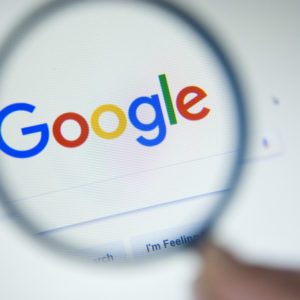With news of the Justice Department and state attorneys general ramping up investigations into Big Tech, the COVID-19 détente between regulators and tech is officially over.
Regulators in the United States appear eager to join their counterparts in the European Union, Australia and elsewhere with renewed efforts to clamp down on alleged abuses of market power by America’s largest tech companies.
While regulators in other countries are quite comfortable regulating large American companies, it is surprising that U.S. regulators would join the attack given the lack of evidence demonstrating consumer harm.
One of the most common complaints alleged by regulators is the market power of companies like Google and Facebook with respect to digital advertising.
Advertising has followed consumers from print to radio, to television, to desktops and laptops, and now to smartphones.
Today’s digital platforms apply valuable data analytics that make it possible to more precisely target consumers than the broad-based advertising of television. While it is clear that Google and Facebook play a substantial role in this marketplace (representing market shares of 37.2 percent and 22.1 percent, respectively), they are by no means the only players.
In fact, even as the digital advertising market continues to expand, both Google and Facebook experienced small declines in market share as Amazon made a jump to third in market share (albeit still at just 8.8 percent).
Similarly, Target, Walmart and other large retailers have increased their online presence and their ability to provide targeted ads for digital consumers. This trend is especially evident in the mobile space, where large platforms directly compete for ads with apps of online retailers and others.
Digital advertising is complex and as it evolves new players are emerging, from ad networks, to ad exchanges and ad servers, data aggregators and data suppliers, and a host of others critical to bridging the gap between advertisers and publishers.
For example, Amazon’s rise in digital advertising has been accompanied by a host of new startups focused on its platform, such as InsightLeap, Downstream and Gradient. A growing number of players are moving into the digital marketplace, such as AT&T’s acquisition of AppNexus, and a host of smaller marketers such as Adobe’s Advertising Cloud, LumaScape, Jivox and others.
The market continues to change, especially in the mobile space, where the convergence of traditional TV and digital platforms is most prevalent. Between smartphones and smart TVs, it is now feasible to use the targeted tools of digital advertising with TV viewers.
Both AT&T and Verizon are poised to be larger players in this market, as is Dish TV. New and more targeted ways to reach potential customers are evolving as online advertising facilitates $500 billion annually in online retail sales as well as sales in more traditional outlets.
There are interesting cross-platform impacts that demonstrate an optimal ad buy may include both traditional television and digital ads. These interdependencies suggest that advertisers, publishers and other intermediaries continue to discover how this dynamic market process is evolving and what components are converging.
Absent evidence of consumer harm, this discovery process should be allowed to continue.
This is not to say there are no challenges in digital advertising. This space has its own concerns, such as brand integrity, privacy and transparency.
But these are not questions of antitrust enforcement; large brands have raised these concerns and it will be incumbent upon advertisers to address these concerns as the market matures. Failure to do so will lower the value of the platforms for digital advertising, reducing demand for these services.
Advertising in 2019 crossed an important threshold: Online advertising overtook ad spending in all other media, with a spend of $129 billion, representing 54 percent of all ad spending. Given the rapid pace of change and the growing share of digital advertising in the overall advertising market, federal regulators should proceed with caution when considering interventions in the digital advertising market.
Prior to any action, careful study is required to demonstrate whether there is, in fact, a significant market failure. In the United States, such analysis has focused on consumer welfare; specific instances of consumer harm need to be identified prior to any consideration of regulating digital advertising.
It is also important to demonstrate that any proposed changes have identifiable welfare-enhancing effects relative to the status quo.
Misapplying economic principles in pursuit of regulating Big Tech can impose market distortions that do more harm than good.

